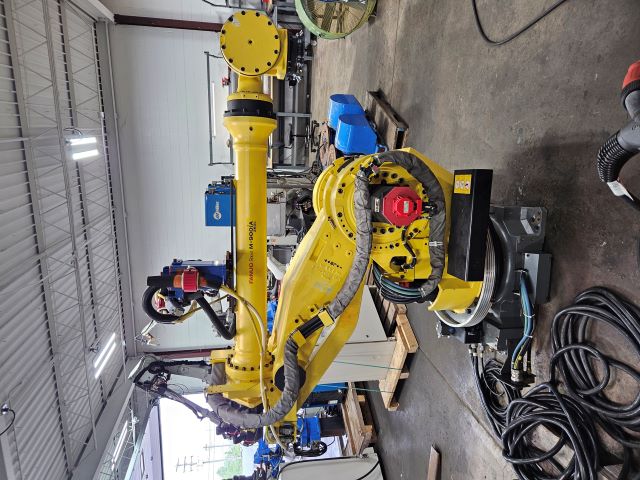Advantages of Robotic Die Casting

Die casting involves producing metalworks for parts that will later be used to produce consumer goods such as appliances, cars, and electronics. It is a process that has been around for decades and has primarily relied on manual labor. However, the dangerous and repetitive nature of die casting makes it ideal for automation with the FANUC M-710ic/70 and other articulated robots. In recent years, the die casting industry has recognized this and moved towards robotic automation. Automating die casting with industrial robots provides several advantages which include:
- • Elimination of Human Error - Replacing humans with the ABB IRB 6640 and other industrial robots in foundries eliminates human error. Manual die casting is prone to errors and inconsistencies which result in poor or defective parts. Robot manipulators are programmed to follow application parameters ensuring accuracy with every part. Robotic automation is a more reliable source of labor especially for high volume operations such as die casting.
- • Faster Cycle Times - Manufacturing robot arms operate at much faster speeds than humans. With robotic die casting cycle times will decrease allowing for greater throughput. More parts can be processed in less time. The elimination of errors prevents rework and bottlenecks which contribute to slow cycles.
- • Greater Manufacturing Capabilities - Industrial robot arms are incredibly versatile. They can handle a variety of part types, sizes, and shapes. They can automate complex or simple processes. This allows die casters to expand their manufacturing capabilities using robots. Parts of various shapes, sizes, and complexity can be produced. Manufacturers can meet the specific needs of their customers with robotic automation. When changes are needed, robots can quickly be reprogrammed to meet new requirements, preventing long turnover times. Should demand increase, handling robots can scale up their operation to meet high product volumes.
- • Safer Operations - Hot temperatures, molten metal, dust, fumes, and noise are common in foundries and hazardous to humans. Automating die casting with the Yaskawa MH180 creates a safer operation by removing workers from foundry floors and reducing their exposure to such hazards.
- • Lower Costs - Labor, material, utility, and other operational costs can be lowered with die casting robots. Automating die casting with robots reduces the manual labor needed, significantly lowering labor costs. The accuracy and error mitigation of robotic manipulators reduces the amount of materials used. Utilities can be saved with the energy efficiency of six axis robots. Parts can be produced for less money than with traditional die casting operations.
- • Higher Productivity - The ability of factory robots to process more parts in less time will result in higher productivity. Not only can productivity increase with robotic die casting it can also become reliable. Robots are very consistent in their operation. The same amount of time is spent on every part and unplanned stoppages are rare unlike with manual die casting.
- • Higher Quality Parts - With robotic die casting part quality will increase due to the accuracy and reliability of industrial robots. Parts will be uniform to one another with defects rarely occurring.
- • Lower Environmental Impact - Robotic automation can lower the environmental impact of die casting. Robots are a sustainable manufacturing method as they are energy efficient, help lower greenhouse gases, and reduce waste.
Robots Done Right is the place to start when it comes to used robots. Contact us if you are interested in buying or selling a used robot.